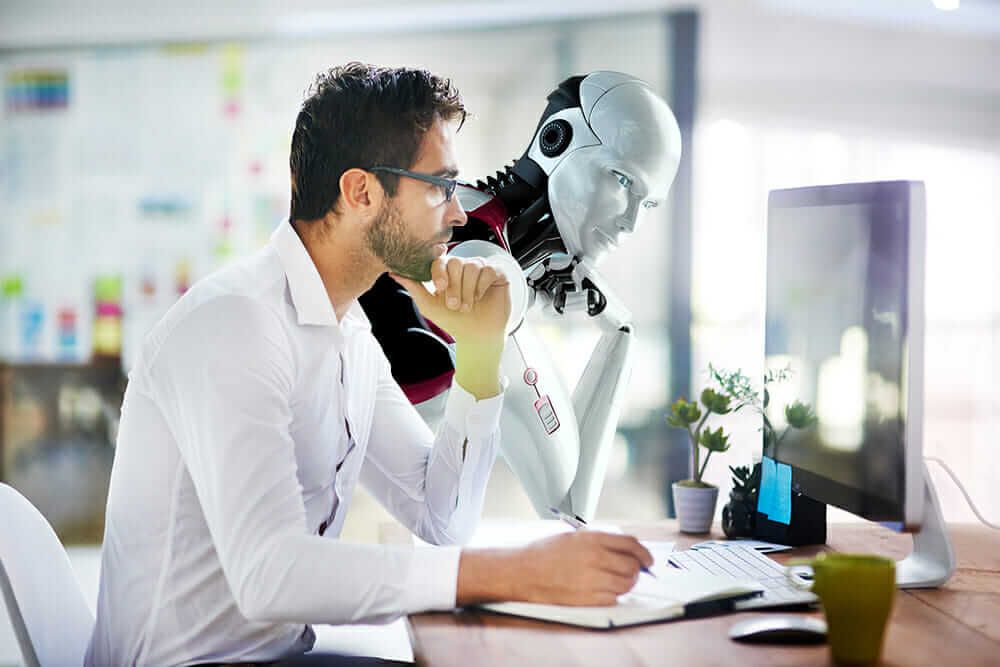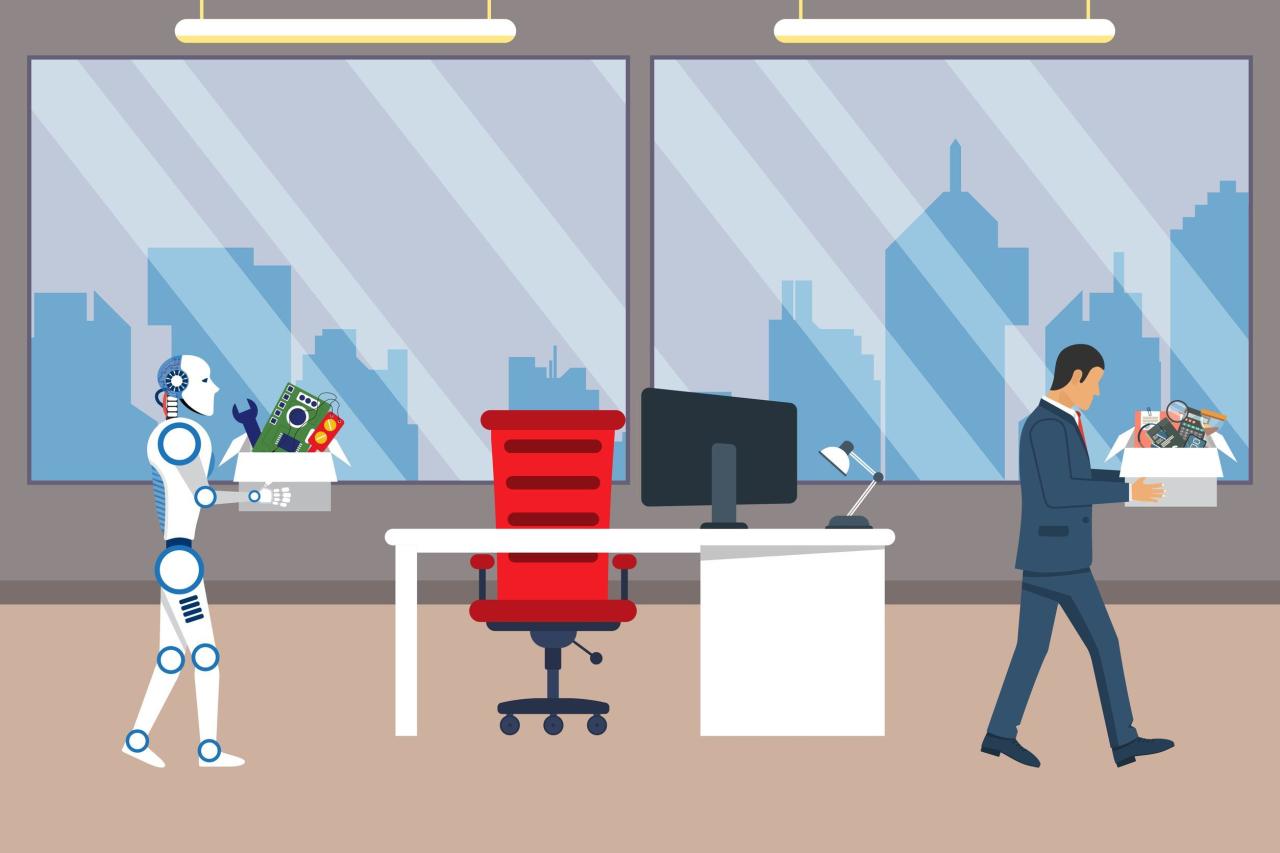The advent of Artificial Intelligence (AI) has sparked considerable debate, often focusing on fears of automation replacing human jobs. However, a more nuanced and increasingly evident reality is emerging: AI tools are powerful enablers designed to significantly boost human work, not merely displace it. Far from being a threat, these intelligent applications are transforming how we innovate, analyze, create, and interact, augmenting human capabilities across nearly every sector. By automating tedious tasks, providing rapid insights, and fostering unprecedented creativity, AI is unlocking new frontiers of efficiency and potential, fundamentally redefining productivity and allowing us to focus on what truly makes us human.
The Evolution of Work: From Muscle to Mind to Machine Collaboration
To fully appreciate how AI tools are augmenting human work, it’s essential to understand the historical trajectory of human labor and its continuous evolution alongside technological advancements.
A. The Era of Physical Labor and Simple Tools
For most of human history, work was predominantly physical, relying on brute strength and basic implements.
- Agrarian Societies: Early work was tied to the land, requiring immense physical effort for farming, hunting, and building. Tools like plows, axes, and rudimentary construction aids extended human muscle power but demanded continuous manual input.
- Industrial Revolution: The introduction of steam, then electricity, powered machinery that mechanized manufacturing. Factories saw humans operating complex machines that vastly multiplied output. This shifted work from pure physical exertion to operating and overseeing mechanical processes.
- Limitations: Even with early machines, work was often repetitive, dangerous, and physically demanding. Human effort was still central to every step, and errors were common. There was little to no ‘intelligence’ embedded in the tools themselves beyond their mechanical design.
B. The Information Age: Knowledge and Digital Tools
The rise of computers and digital technology fundamentally transformed work by automating information processing and enabling complex calculations.
- Office Automation: Word processors, spreadsheets, and databases digitized administrative tasks, making information management faster and more accurate. This marked a shift from manual record-keeping to digital manipulation.
- Specialized Software: CAD (Computer-Aided Design), accounting software, and early programming languages provided tools for intellectual work, enabling engineers, designers, and analysts to perform complex tasks with greater precision and speed.
- Connectivity and Collaboration: The internet and early networking tools allowed for unprecedented levels of communication and remote collaboration, connecting teams globally and enabling distributed workforces.
- Human-Driven Logic: While these tools automated tasks, they were fundamentally driven by human logic and explicit instructions. The intelligence resided entirely with the user, who had to define every rule and command. The tools executed, but did not ‘understand’ or ‘learn.’
C. The Dawn of Artificial Intelligence: Learning and Adapting
The recent explosion in AI capabilities, particularly in machine learning, has ushered in a new era where tools are no longer just extensions of our physical or logical commands but active, learning partners.
- Data-Driven Insights: AI tools can process and analyze vast datasets far beyond human capacity, identifying patterns, correlations, and anomalies that would be invisible to the human eye. This moves from just processing information to generating insights.
- Predictive Capabilities: Machine learning allows tools to learn from historical data to make predictions about future events (e.g., predicting equipment failure, forecasting market trends, anticipating customer needs). This shifts operations from reactive to proactive.
- Adaptive Learning: Unlike rigid scripts, modern AI tools can adapt and improve their performance over time as they are exposed to more data and feedback. They are dynamic, continuously optimizing their internal logic.
- Generative Capabilities: Advanced AI, particularly generative AI models, can create entirely new content, designs, or code, augmenting human creativity and significantly accelerating content production.
This continuous evolution highlights a consistent theme: technology has always transformed work, shifting the nature of human contribution. AI is the latest, and perhaps most profound, iteration of this ongoing partnership between human ingenuity and technological advancement.
Core Ways AI Tools Augment Human Capabilities
AI tools boost human work by enhancing our natural abilities across several critical dimensions, turning limitations into opportunities.
A. Automating Repetitive and Mundane Tasks
One of the most immediate and significant impacts of AI tools is the automation of tasks that are repetitive, rule-based, or high-volume.
- Data Entry and Processing: AI-powered Robotic Process Automation (RPA) tools can automatically extract data from documents, input it into systems, and process transactions, freeing human workers from tedious data handling.
- Customer Service: AI chatbots and virtual assistants handle routine customer inquiries, triage issues, and provide instant responses, allowing human agents to focus on complex, empathetic, or escalated cases.
- Content Moderation: AI can rapidly scan vast amounts of content (images, videos, text) to identify and flag inappropriate material, significantly augmenting human moderation teams.
- Routine IT Operations: AI can automate system monitoring, alert triage, and even some aspects of incident response, reducing the burden on IT professionals.
By offloading these low-value, high-volume tasks, AI frees up human cognitive capacity and time, allowing individuals to concentrate on more strategic, creative, and engaging work.
B. Enhancing Data Analysis and Insight Generation
AI tools excel at processing and deriving insights from massive and complex datasets, providing intelligence that is beyond human analytical capacity.
- Pattern Recognition: AI can identify subtle patterns, correlations, and anomalies in data that would be imperceptible to humans, leading to breakthroughs in scientific research, market analysis, and fraud detection.
- Predictive Analytics: Machine learning models within AI tools analyze historical trends to forecast future outcomes, enabling better decision-making in finance (e.g., stock predictions), healthcare (e.g., disease outbreaks), and business (e.g., sales forecasting).
- Diagnostic Assistance: In fields like medicine, AI tools can analyze medical images (X-rays, MRIs) or patient data to assist doctors in diagnosing diseases more quickly and accurately, acting as a powerful second opinion.
- Market Research and Consumer Insights: AI can analyze vast amounts of social media data, customer reviews, and market trends to provide businesses with deep, actionable insights into consumer preferences and market dynamics, informing product development and marketing strategies.
C. Boosting Creativity and Content Generation
Contrary to the fear that AI stifles creativity, generative AI tools are emerging as powerful collaborators, augmenting human creative processes.
- Automated Content Creation: AI can generate text (e.g., marketing copy, news summaries, basic reports), images (e.g., concept art, stock photos), and even music based on prompts, providing a strong starting point or a rapid way to produce variations.
- Design Augmentation: AI tools can assist designers by generating numerous design variations, suggesting color palettes, optimizing layouts, or even creating 3D models from sketches, accelerating the ideation phase and enabling exploration of a wider design space.
- Code Generation and Refinement: AI can write code snippets, suggest autofills, debug errors, and even refactor entire codebases, making software development faster and more efficient, allowing developers to focus on complex logic and architecture.
- Personalized Marketing and Sales: AI can analyze customer data to generate highly personalized marketing messages, product recommendations, and sales pitches, increasing relevance and conversion rates.
D. Improving Decision-Making and Strategic Planning
AI tools provide data-driven insights and simulations that enable humans to make more informed and strategic decisions.
- Scenario Planning: AI can simulate complex scenarios, evaluating the potential outcomes of different strategic choices (e.g., supply chain disruptions, investment strategies), providing decision-makers with a clearer understanding of risks and opportunities.
- Risk Assessment: AI algorithms can analyze vast amounts of data to identify and quantify risks more accurately, whether in financial markets, cybersecurity, or project management.
- Resource Optimization: AI can optimize resource allocation in complex systems, such as optimizing logistics routes, scheduling workforce shifts, or managing energy grids, leading to significant efficiencies.
- Personalized Recommendations for Professionals: AI can act as a personalized assistant, recommending relevant research papers, legal precedents, or best practices to professionals in various fields, accelerating knowledge acquisition.
E. Enhancing Collaboration and Communication
AI tools are also making human collaboration and communication more efficient and effective.
- Smart Meeting Summaries: AI can transcribe meetings, identify key discussion points, assign action items, and create summaries, saving participants valuable time.
- Language Translation: Real-time AI-powered translation tools break down language barriers in global teams, facilitating seamless communication.
- Automated Scheduling: AI can manage complex calendars, finding optimal meeting times, booking resources, and sending reminders, reducing administrative overhead.
- Personalized Learning and Development: AI can tailor learning paths for employees, identifying skill gaps and recommending relevant training modules, fostering continuous professional development.
Key Industries Transformed: AI’s Broad Impact
AI tools are not limited to specific niches; their transformative power is reshaping workflows across a diverse range of industries.
A. Healthcare and Medicine
AI tools are revolutionizing patient care, research, and administrative processes.
- Diagnostic Augmentation: AI can analyze medical images (X-rays, MRIs, CT scans) to detect anomalies (e.g., tumors, lesions) with high accuracy, assisting radiologists and pathologists.
- Drug Discovery: AI accelerates the drug discovery process by predicting molecular interactions, screening vast chemical libraries, and designing novel compounds, significantly reducing research time and cost.
- Personalized Treatment Plans: AI analyzes patient data (genomics, medical history, lifestyle) to recommend highly personalized treatment plans, drug dosages, and preventative measures.
- Robotic Surgery Assistance: AI-powered surgical robots assist surgeons with precision, tremor reduction, and real-time data visualization during complex procedures.
- Administrative Automation: Automating patient scheduling, medical billing, and record management frees up healthcare professionals to focus on patient care.
B. Finance and Banking
AI tools are enhancing decision-making, security, and customer service in the financial sector.
- Fraud Detection: AI algorithms analyze transaction patterns in real-time to detect and prevent fraudulent activities with unprecedented accuracy.
- Algorithmic Trading: AI-powered algorithms execute trades at high speeds, analyzing market data and executing strategies faster than humans.
- Credit Scoring and Risk Assessment: AI models provide more accurate and nuanced credit risk assessments, leading to more inclusive lending and better risk management for financial institutions.
- Personalized Financial Advice (Robo-Advisors): AI-powered robo-advisors provide automated, personalized investment advice and portfolio management, making financial planning more accessible.
- Compliance and Regulatory Reporting: AI automates the monitoring of transactions for compliance with regulations (e.g., AML, KYC) and generates regulatory reports, reducing manual effort and ensuring accuracy.
C. Manufacturing and Supply Chain
AI tools are driving efficiency, quality, and resilience in production and logistics.
- Predictive Maintenance: AI analyzes sensor data from machinery to predict equipment failure, enabling just-in-time maintenance and minimizing costly unplanned downtime.
- Quality Control: AI-powered computer vision systems perform automated quality inspections on production lines, detecting defects with high precision and speed.
- Supply Chain Optimization: AI optimizes logistics, routing, inventory management, and demand forecasting, leading to more efficient, resilient, and cost-effective supply chains.
- Robotics and Automation: AI enables more adaptable and autonomous industrial robots, enhancing their ability to perform complex tasks and collaborate with humans on the factory floor.
D. Creative Industries and Content Creation
AI is becoming a powerful co-creator and assistant in fields like art, design, writing, and entertainment.
- Generative Art and Design: AI tools can generate unique images, illustrations, and 3D models based on text prompts, serving as inspiration or foundational elements for human artists.
- Content Writing Assistance: AI can help writers brainstorm ideas, generate drafts, summarize long texts, and refine grammar and style, accelerating content production for marketing, journalism, and more.
- Music Composition and Production: AI can compose melodies, suggest harmonies, and even generate full musical pieces, assisting composers and producers.
- Video Editing and Production: AI automates tedious aspects of video editing (e.g., cutting silent parts, generating captions, color correction) and can even create synthetic media (e.g., deepfakes for special effects, virtual actors).
E. Education and Learning
AI tools are transforming how we learn and teach, offering personalized and accessible educational experiences.
- Personalized Learning Paths: AI can analyze student performance and learning styles to create customized curricula, recommending resources and adapting teaching methods to individual needs.
- Intelligent Tutoring Systems: AI tutors provide personalized feedback, answer questions, and offer tailored explanations, acting as a supplemental learning resource.
- Automated Assessment: AI can grade certain types of assignments (e.g., essays, coding exercises) more quickly and consistently, freeing up educators’ time.
- Accessibility Enhancements: AI-powered tools provide real-time translation, captioning, and text-to-speech features, making educational content accessible to a wider audience.
Challenges and Ethical Considerations in AI Augmentation
While the benefits of AI tools are immense, their widespread adoption also brings forth significant challenges and critical ethical considerations that must be proactively addressed.
A. Workforce Adaptation and Reskilling
The most pressing challenge is the need for workforce adaptation. As AI automates routine tasks, roles will evolve, requiring a massive effort in reskilling and upskilling the existing labor force. This includes:
- Skill Gap: A growing disparity between the skills demanded by AI-powered workplaces (e.g., AI literacy, critical thinking, problem-solving, emotional intelligence) and the skills possessed by the current workforce.
- Job Redefinition: Many jobs won’t be eliminated but will be significantly redefined, requiring workers to adapt to collaborating with AI. This requires new training programs and a flexible mindset.
- Just Transition: Ensuring that displaced workers have access to meaningful opportunities and support during the transition, preventing increased inequality and social unrest.
B. Ethical Concerns and Bias
AI tools learn from data, and if that data is biased, the AI will perpetuate and even amplify those biases.
- Algorithmic Bias: AI systems can exhibit bias (e.g., in hiring, lending, law enforcement) if trained on historical data that reflects societal prejudices. This can lead to unfair or discriminatory outcomes.
- Transparency and Explainability (XAI): Many advanced AI models operate as ‘black boxes,’ making it difficult to understand how they arrive at their decisions. This lack of transparency can hinder trust, accountability, and the ability to debug errors.
- Privacy and Data Security: AI tools often require access to vast amounts of data, raising concerns about data privacy, consent, and the potential for misuse or breaches.
- Misinformation and Deepfakes: Generative AI tools can create highly realistic but fake images, videos, and audio (deepfakes), posing significant challenges for truth, trust, and security.
C. Integration Complexity and Cost
Implementing AI tools, especially in large enterprises, is not always straightforward.
- Data Infrastructure: Setting up the necessary data pipelines, storage, and processing capabilities to feed and train AI models can be complex and costly.
- Legacy Systems: Integrating new AI tools with existing legacy IT systems can be a significant technical hurdle.
- Talent Shortage: The shortage of skilled AI engineers, data scientists, and ML operations (MLOps) specialists makes it challenging for organizations to build and deploy AI solutions effectively.
- Ongoing Maintenance and Optimization: AI models require continuous monitoring, retraining, and optimization as data patterns change, which adds to operational costs.
D. Regulatory and Governance Frameworks
The rapid pace of AI development is outpacing regulatory frameworks, leading to uncertainty and potential risks.
- Lack of Clear Laws: Many countries are still grappling with how to regulate AI, particularly concerning privacy, liability for autonomous systems, and ethical guidelines.
- Standardization: The lack of universal standards for AI ethics, safety, and performance can hinder global adoption and create fragmentation.
- Accountability: Determining legal and ethical accountability when an AI system makes an error or causes harm is a complex challenge.
E. Over-Reliance and Loss of Human Skills
There is a risk that an over-reliance on AI tools could lead to a degradation of essential human skills, such as critical thinking, problem-solving, and creative ideation, if humans delegate too much cognitive work to machines. Maintaining a balance between augmentation and dependency is crucial.
Best Practices for Maximizing AI Tools’ Impact on Human Work
To effectively harness the power of AI tools and mitigate potential challenges, organizations must adopt a strategic, human-centric, and ethical approach.
A. Focus on Augmentation, Not Full Automation
Prioritize using AI to augment human capabilities rather than attempting full, lights-out automation, especially for complex or sensitive tasks. Design AI tools to assist, provide insights, and handle routine elements, allowing humans to make final decisions, apply empathy, and exercise creativity. This ‘human-in-the-loop’ approach is crucial for high-stakes scenarios and for fostering trust.
B. Invest Proactively in Workforce Reskilling and Education
Acknowledge that job roles will evolve. Implement proactive and continuous reskilling and upskilling programs for your workforce. Train employees not just in technical AI skills (e.g., data literacy, AI prompt engineering) but also in uniquely human skills that AI cannot replicate (e.g., critical thinking, complex problem-solving, creativity, emotional intelligence, ethical reasoning, interpersonal communication). Foster a culture of lifelong learning.
C. Build Robust Data Governance and Ethical AI Frameworks
Establish comprehensive data governance policies to ensure data quality, privacy, and security for AI systems. Develop and adhere to explicit ethical AI frameworks that address issues like bias detection and mitigation, transparency, fairness, and accountability. Regularly audit AI models for unintended biases and adverse impacts. Prioritize explainable AI (XAI) to build trust and understanding.
D. Implement AI Iteratively with Clear Metrics
Adopt an iterative and agile approach to deploying AI tools. Start with well-defined pilot projects that solve specific problems and demonstrate clear, measurable ROI. Define success metrics upfront and continuously monitor the performance of AI tools, collecting feedback from human users. Use this data to refine models, optimize workflows, and iterate on the solution.
E. Design for User Experience and Collaboration
AI tools should be designed with a strong focus on user experience (UX), making them intuitive, easy to use, and seamlessly integrated into existing workflows. Focus on collaborative interfaces where humans and AI can interact naturally, leveraging each other’s strengths. Provide clear feedback mechanisms for AI suggestions and enable users to easily provide corrections or override AI decisions.
F. Secure Data and AI Models End-to-End
Given the sensitive nature of data processed by AI tools, implement robust cybersecurity measures across the entire AI pipeline—from data ingestion and storage to model training, deployment, and inference. This includes secure access controls, encryption, vulnerability management, and protection against adversarial attacks on AI models.
G. Foster a Culture of Experimentation and Learning
Encourage a culture of innovation and responsible experimentation with AI tools. Create safe spaces for teams to explore new AI applications, learn from successes and failures, and share best practices. Promote interdisciplinary collaboration between AI specialists, domain experts, and end-users to identify the most impactful opportunities for AI augmentation.
H. Prioritize Explainability and Trust
For critical applications, the ability to explain how an AI tool arrived at a particular recommendation or decision (Explainable AI – XAI) is vital for building trust and ensuring accountability. Users are more likely to adopt and trust AI tools if they understand the underlying logic, even if it’s complex.
The Future Trajectory of AI Tools and Human Work
The synergistic relationship between AI tools and human work is poised to deepen and expand, leading to even more profound transformations across industries and society.
A. Human-AI Symbiosis and Augmented Intelligence
The future will see a seamless human-AI symbiosis, where AI tools are not just assistants but integral parts of our cognitive processes. AI will become a continuous thought partner, augmenting human intelligence in ways that enable us to tackle increasingly complex challenges. This will involve more intuitive interfaces, brain-computer interfaces, and AI that anticipates needs with greater accuracy.
B. Personalized Automation and Adaptive Workflows
AI tools will deliver hyper-personalized automation, dynamically adapting workflows and interfaces to individual user preferences, cognitive styles, and real-time context. This will go beyond simple customization, with AI proactively optimizing the work environment for peak individual productivity and well-being.
C. AI-Powered Creativity and Innovation Acceleration
Generative AI will evolve to become an even more sophisticated creative partner, enabling humans to explore vast creative possibilities. From generating novel product designs and scientific hypotheses to composing complex music and crafting immersive narratives, AI will act as a powerful accelerator for human innovation, pushing the boundaries of what’s creatively possible.
D. Democratization of Advanced Skills
Complex analytical, creative, and technical tasks that currently require years of specialized training will become more accessible to a broader population through AI tools. AI will act as a force multiplier, effectively democratizing advanced skills by providing intelligent assistance, lowering barriers to entry for many professions, and empowering individuals with new capabilities.
E. Autonomous Systems and Human Oversight
While full autonomy will increase in some domains (e.g., certain logistics, highly structured manufacturing), the dominant model will be autonomous systems with intelligent human oversight. AI will handle routine decisions and actions, alerting humans only for complex anomalies, ethical dilemmas, or strategic interventions, allowing for both efficiency and accountability.
F. Ethical AI Governance and Responsible Development
As AI tools become more powerful and integrated, the focus on ethical AI governance and responsible development will intensify globally. This includes developing international standards for AI safety, transparency, and accountability, ensuring that AI development aligns with human values and societal well-being. Regulatory frameworks will mature to guide the responsible deployment of these transformative tools.
G. AI for Social Good and Global Challenges
AI tools will be increasingly leveraged to address pressing global challenges, from climate change and disease outbreaks to disaster response and resource management. AI’s ability to analyze vast data, simulate complex systems, and optimize resource allocation will be critical for developing sustainable solutions and improving human welfare on a planetary scale.
Conclusion
The narrative surrounding Artificial Intelligence is rapidly shifting from one of threat to one of profound opportunity. AI tools are unequivocally boosting human work, serving not as replacements but as indispensable augmenters of our capabilities. By intelligently automating the mundane, accelerating insights, catalyzing creativity, and refining decision-making, AI is liberating human potential, allowing individuals and organizations to focus on what truly adds value and demands uniquely human attributes like empathy, strategic thinking, and innovation.
While the journey towards this augmented future presents challenges—particularly in workforce adaptation, ethical governance, and integration complexities—these are surmountable with proactive planning, continuous investment in human capital, and a commitment to responsible AI development. The future of work is not one where machines replace humans, but one where humans, empowered by increasingly sophisticated AI tools, achieve unprecedented levels of efficiency, creativity, and impact, truly unleashing human potential and driving progress across every facet of our digital world.














